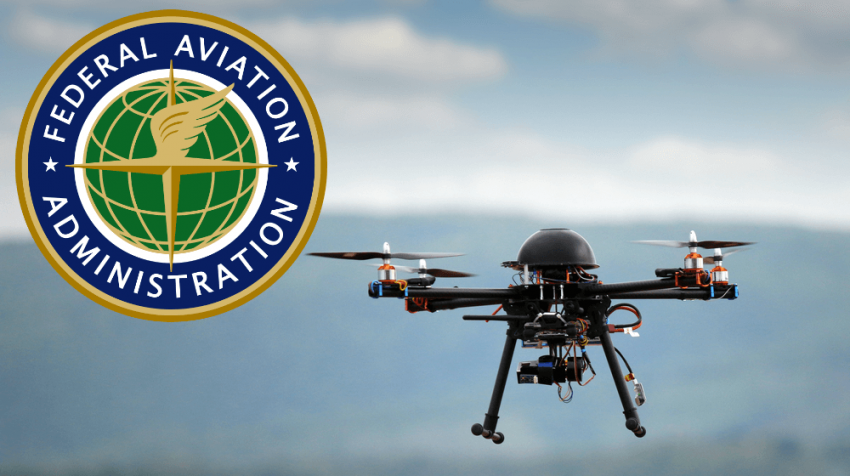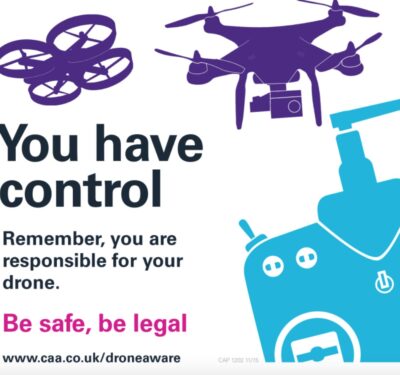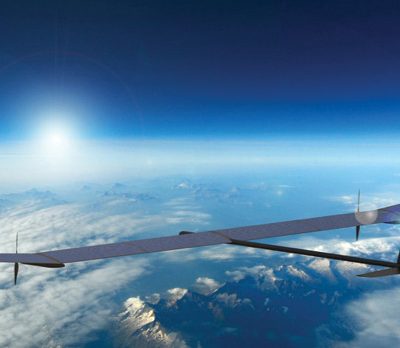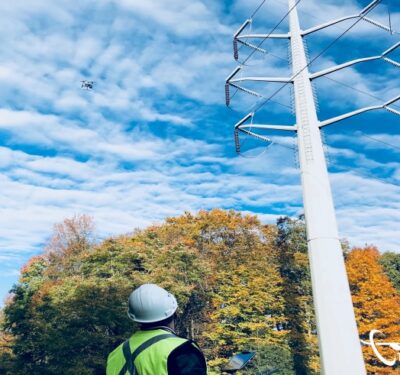
Last month we discussed what we got, what didn’t get and what we need from Part 107. There’s great rulemaking (finally) in Part 107, but two huge gaps; it doesn’t allow flight beyond line of sight (BLOS) for unmanned aircraft systems (UAS) or flights over people not directly involved in operation of the UAS. The good news is the FAA can waive both restrictions. This month’s article is the first in a series on the major technical issues the FAA must address before they can make BLOS safe for everyone. Next series will cover operations over people.
The first beyond line of sight issue to solve is how to give drones the same detect and avoid (DAA) capability that allows manned pilots avoid collisions. DAA is the most challenging BLOS issue because it impacts UAS design, air traffic management procedures, remote pilot training/certification and even ground radar coverage. DAA for unmanned systems is vital because our air safety system is based upon this bedrock requirement in Part 91: “Vigilance shall be maintained by each person operating an aircraft so as to see and avoid other aircraft …pilot shall give way to that aircraft and may not pass over, under, or ahead of it unless well clear.” The assumption is that no matter what happens to surveillance equipment on a manned aircraft – loss of transponders, lack of radar, radio malfunction – the FAA assumes the aircrew can maintain some degree of safety by looking outside their cockpit to avoid collisions. Hence, the FAA will continue to mandate that remote pilots must fly their drones within visual range until the UAS industry can convince the FAA they have a surveillance system that’s equivalent to having a pilot on board to see and avoid collisions.
So, the question is – how do you give a remote pilot the same (or better) ability as a manned pilot to see and avoid collisions? The answer starts with defining how far apart a drone needs to remain to be “well clear” of collision. “Well clear” parameters were exhaustively researched during development of the Traffic Alert and Collision Avoidance System (TCAS) system that automates collision avoidance between manned aircraft. The system uses the ratio of slant range between aircraft to their range rate and measures this as the “tau” or time to collision in seconds. The UAS community proposed definition of “well clear” is a 35 second tau and a 4,000 ft-horizontal/700 ft feet vertical separation between aircraft for large (over 55 lb) UAS. To achieve these distances, NAS Ames research indicates a surveillance system must see at least 5 nautical miles (nm) to automatically avoid collision and see 10 nm to give the remote pilot enough time to avoid collisions. The well clear definition for small UAS is still in coordination, but should be out in the new year.
The obvious solution is to equip drones with ADS-B transponders. ADS-B is a transponder system that continually broadcasts the GPS position of equipped aircraft, allowing other ADS-B aircraft to see the positions of all equipped aircraft in the area. The FAA has years of experience with ADS-B and it’s a proven technology to provide air surveillance to manned aircrew. However, ADS-B has problems as a complete solution for drone DAA. First, it only works against “cooperative” targets – other ADS-B equipped aircraft. ADS-B isn’t mandatory until 2020 and even then it won’t see “non-cooperative” targets like birds, balloons, aircraft with broken ADS-B, etc. The FAA is also concerned that drones may saturate the frequencies associated with ADS-B because the system was designed to work with just dozens of manned aircraft within view of each other. With drones, there could be hundreds or thousands of ADS-B users in a particular area, saturating the ADS-B frequencies.
If ADS-B can only cover “cooperative” targets, what is the best way to detect “uncooperative targets” at least 10 nm from a drone to allow remote pilots to avoid collisions? The FAA has provided safe separation for aircraft for decades using ground based radar or “ground based detect and avoid” (GBDAA), making radar a great choice for drone DAA. NASA Ames is already working this problem with their Unmanned Traffic Management (UTM) system. UTM provides many UAS air traffic management functions, but the most important is providing GBDAA services via connected ground radars to remote pilots to help them avoid collisions. UTM has both an advisory DAA mode to allow pilots to avoid collisions themselves and an automatic mode that maneuvers the drone if the pilot doesn’t act in time. UTM can connect to as many ground radars as needed, so providing 10 nm of surveillance of non-cooperative targets around each drone is just a matter of having enough ground radars. Of course, ground radars with sufficient resolution to detect drones in flight aren’t cheap. UTM researchers are investigating a UTM subscription fee that recoups system costs.
ADS-B and a GBDAA system, like UTM, would be complete solution for “cooperative” and “noncooperative” target surveillance if it wasn’t for one common problem in UAS operations – lost link. The good news is that ADS-B will still work if a drone loses link with its ground station, so other ADS-B equipped aircraft are safe from collision. But what about non-cooperative targets? Ground based systems depend on the data link to prevent collision with non-cooperative targets. No link, no commands to the drone to avoid collision.
Hence, to be 100% safe from collision drones will need an airborne detect and avoid (ABDAA) system that can detect non-cooperative targets out to at least 5 nm to permit automatic collision avoidance. Optical systems can probably provide 5 nm detection in good weather, but drones will need radar to detect targets in weather and to provide the full 10 nm surveillance range needed to give the remote pilot enough time to react. That’s a pretty tough requirement for smaller drones and will certainly restrict payloads for larger UAS.
Thankfully, the FAA is investigating whether to set drone DAA equipment requirements based on the intended operating risk of the mission set. For example, does an ADS-B equipped drone flying a precision agriculture mission under NASA’s UTM GBDAA coverage really need on-board radar if all the crop dusters in the region have ADS-B and deconflict their schedules with drone operators? How about operations in the Gulf of Mexico? The oil companies require all aircraft operating near their rigs to have ADS-B and it’s easy to provide UTM coverage by installing GBDAA radars on the rigs themselves. On the other end of the spectrum, drones operating in congested airspace or in weather would need radar ABDAA to get flight approval.
This covers the basics of DAA – one of the two big technical problems the FAA and industry must solve to make BLOS drone flight a reality. I personally believe that ADS-B and UTM with GBSAA will be safe enough to permit drone operations in even congested airspace. Drone data links are getting more reliable, making it less likely that drones will get cut off from ground based anti-collision instructions. Besides, the increased radar coverage from GBDAA systems will not only make the skies safer for manned aircraft, but will also help track malicious drone operators. The key question is cost. Will a subscription based service be affordable?
Next month will cover the other major BLOS problem; how to reliably extend data link ranges to ensure drone control over long distances.






